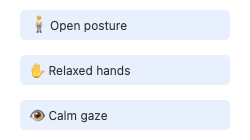Navigating difficult client interactions is a vital skill for any executive assistant. Your ability to stay calm, show empathy, and act as a diplomatic buffer is essential. This protects your executive’s reputation and builds trust with clients.
You’ll often find yourself in situations such as:
- Responding to clients who are upset about delays, miscommunication, or unmet expectations
- Managing live interactions when a client is frustrated or things don’t go as planned
- Stepping in to de-escalate tension and keep conversations productive
Developing these skills allows you to turn challenging moments into opportunities to build trust and strengthen partnerships.
When a client is frustrated, it can feel a bit like being the friend who has to smooth things over after plans go sideways. Maybe there’s been a delay, a miscommunication, or something just didn’t meet their expectations. As the executive assistant, you’re the one who steps in to listen and help get things back on track.
A helpful way to approach these moments is to use the AAA method: Acknowledge, Align, Assure.
- Acknowledge the client’s feelings. Sometimes just hearing, “I understand how delays can be frustrating,” is enough to take the edge off.
- Align yourself with their concerns. Show that you’re on their side: “I appreciate your patience as we work to resolve this.”
- Assure them that you’re committed to helping: “Your partnership is important to us, and we’re committed to making this right.”
Avoid brushing off their concerns or getting defensive, like saying, “That’s just how our process works.” Instead, focus on what you can do next: “Let me check on the status and see how we can expedite the integration for you.”
Just like smoothing over a rough patch with a friend, your empathy and willingness to help can turn a tense moment into a chance to build trust.
When you’re interacting live, your calm, professional presence sets the tone. If a client is upset or there’s an unexpected change (like your executive running late), acknowledge the inconvenience sincerely:
“Thank you for your patience. I apologize for the wait. In the meantime, is there anything I can provide or clarify for you?”
Keep your tone steady and your body language open. Focus on what you can do in the moment, rather than making excuses. See the illustration below for hints on how to reinforce your nonverbal communication during these tense moments:

Sometimes, you’ll need to step in to de-escalate tension between your executive and a client. Listen carefully, reframe issues neutrally, and offer reassurance without overpromising. For example:
“I hear your concerns about the proposal terms. Let me make sure I fully understand your priorities so we can address them together.”
Avoid language that sounds dismissive or argumentative, like, “That’s not our fault.” Instead, use:
“Let’s work together to find a solution that meets your needs.”
Here’s how this looks in action:
- Jessica: Hi Jake, I’m really disappointed with how long the integration is taking. We were told it would be done last week, and now our team is falling behind.
- Jake: I completely understand your frustration, Jessica, and I apologize for the delay. Your project is very important to us.
- Jessica: I just need to know when this will actually be finished. We can’t keep waiting.
- Jake: Thank you for sharing your concerns. Let me check with our technical team right now and see if we can expedite the process. I’ll update you by the end of the day.
- Jessica: I appreciate that, Jake. I just want to make sure we’re not forgotten.
- Jake: Absolutely, Jessica. Your partnership is a priority for us, and I’ll make sure you’re kept in the loop every step of the way.
In this exchange, Jake stays calm, shows empathy, and focuses on solutions. He acknowledges Jessica’s frustration, apologizes sincerely, and commits to concrete next steps—demonstrating how to keep things professional and de-escalate tension.
